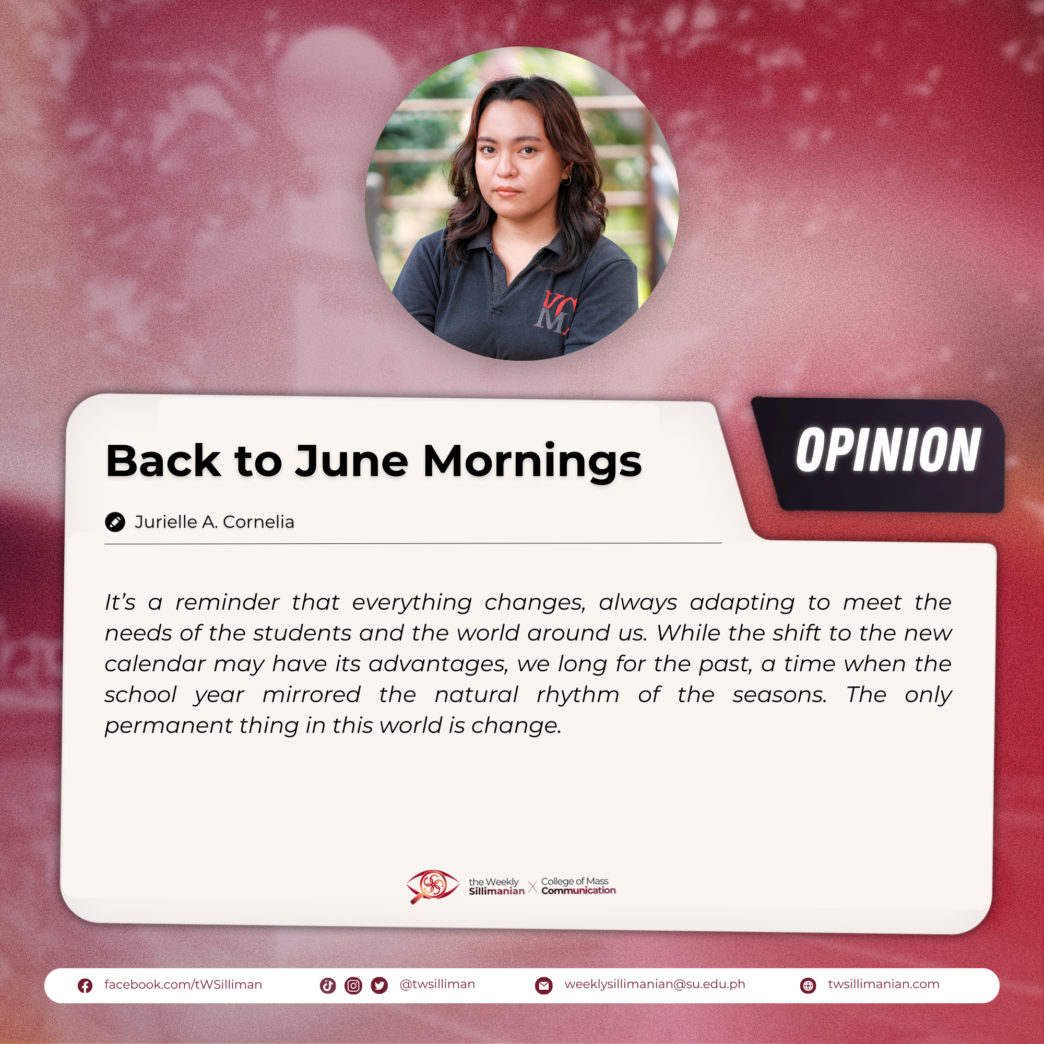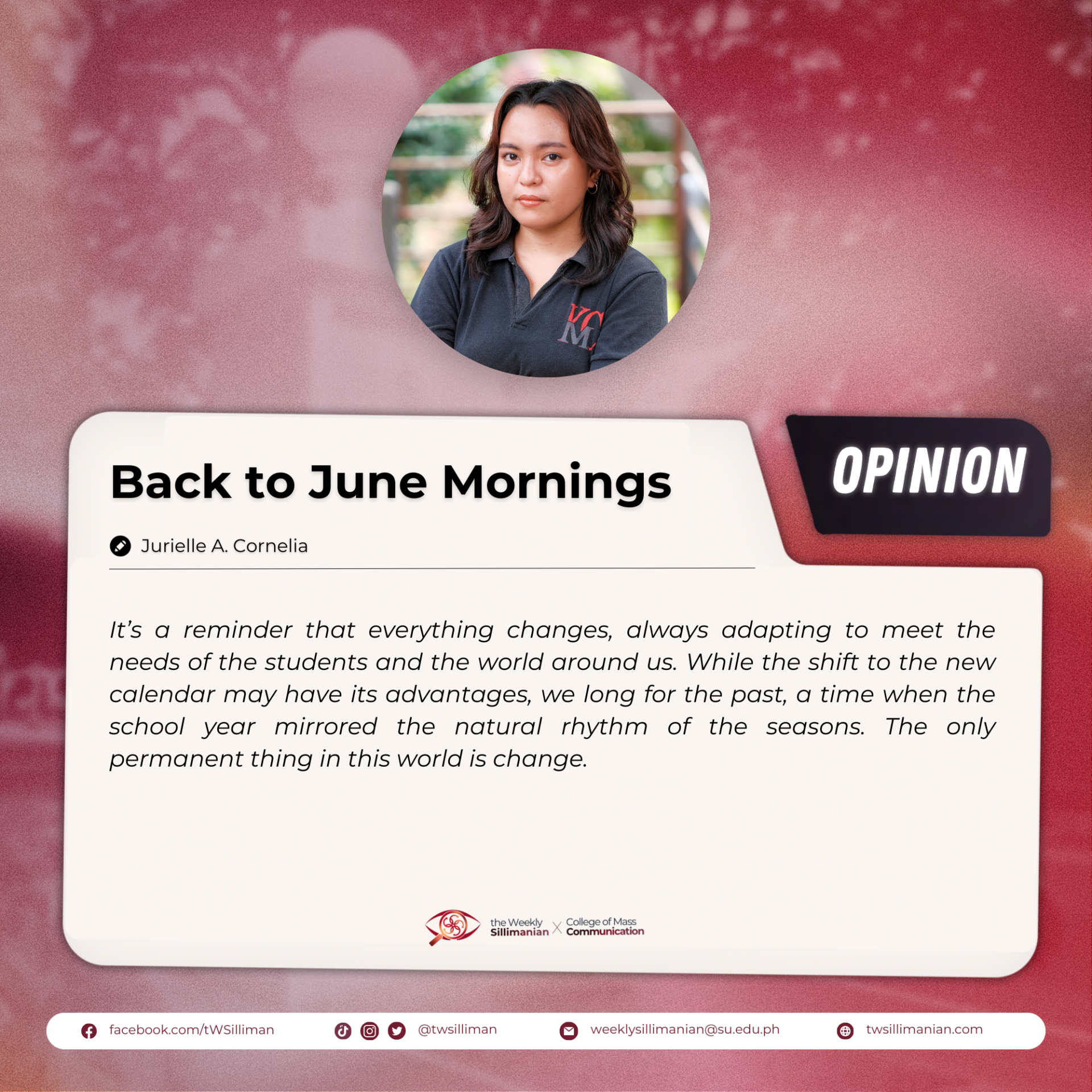By Jurielle Cornelia
Remember when school used to start in June?
Growing up in the Philippines, changes in the school calendar weren’t just a random fact—it was our entire academic world. I can still recall those first days of classes, my backpack heavy with new books and notebooks, and the moment I stepped into classrooms, June started to rain down.
Our old school calendar was like a well-worn family recipe—passed down, familiar, and seemingly unchangeable.
June to March—nine months of learning, sweating, and surviving. It’s not that big of a difference from the current one, it just felt different.
Those June Mornings were something else. While other countries were preparing for their academic years, we were already deep into our studies.
Rainy season? No problem. We’d become experts in navigating school life despite the weather.
By March, everything was a challenge. Imagine taking final exams as the summer heat started to build. The electric fans pushing around warm air, and having to use air conditioning all day; the student still tries their best to concentrate, and finish the school year strong.
Then came the changes—the years when our school calendar began to shift. The government and education leaders started discussing new ways to align our academic calendar with global standards. Gradually, the traditional June to March shifted to August to May.
Change isn’t always easy, parents grumbled, and the teachers had to reorganize. Most students wondered what was happening. However, in the end, the new academic calendar became our new normal.
If you ask a teenager today about the previous school schedule, they might not fully understand the nuances of how things used to be. For them, the current calendar is all they know. I used to remember my parents telling me stories about their old school days, describing how carefree they felt compared to the fast-paced environment today.
Some traditions fade, some evolve. Our academic schedule proves that even something as seemingly permanent as an academic schedule can transform.
It’s a reminder that everything changes, always adapting to meet the needs of the students and the world around us. While the shift to the new calendar may have its advantages, we long for the past, a time when the school year mirrored the natural rhythm of the seasons. The only permanent thing in this world is change.










